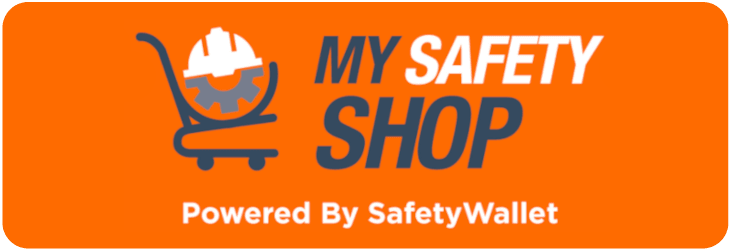Health and Safety Risk Assessment Legislation and Risk Management
Introduction
Risk Assessments are a crucial part of an effective health and safety management system and there are numerous health and safety sections and regulations in the Occupational Health and Safety Act 85 of 1993 that have explicit requirements for risk assessment.
When considering health and safety risk assessment legislation and risk management, it is imperative to remember the legal obligation that employers have towards ensuring that they provide a health and safe working environment to employees, visitors, customers, and anyone who may be affected by the activities of the organisation.
If you have any questions, please feel free to speak to one of our Experts
Components of a Risk Assessment
What is a hazard?
A hazard is something that has the potential to cause harm, either an object, a circumstance, behaviour, a hazardous substance, and so on.
What is a risk?
A risk should not be confused with a hazard as it is the likelihood or the potential for harm resulting from a hazard. Risk is a construct of two distinct components namely the likelihood of harm and the consequence of harm.
A risk may, for instance, be of low likelihood but contain a high consequence, such as a plane crash. However, it could also be a high likelihood and a low consequence, such as a papercut while working with documents.
Residual risk can be defined as the subjective amount of remaining risk which remains after risk control measures have been implemented.
What is a risk assessment?
When considering the definitions above, a risk assessment is a systematic evaluation of hazards in the work activities and the identification of which hazards could cause harm, and then it is also an assessment of the potential harm and the consequence thereof.
The purpose of a risk assessment is to identify the things in the workplace that can cause harm to employees. It should then lead to the implementation of risk control measures to eliminate or reduce the risk of an incident, injury, or accident to a low- and acceptable level.
Any questions? Speak to one of our Experts
Why is a Risk Assessment important?
Employers are legally required to ensure that employees, and any visitors to the premises, are safeguarded against everything that threatens their health, safety, and wellbeing. For this reason, employers must assess the risks and hazards in the workplace and to eliminate or reduce them.
An important part in the risk assessment procedure is the identification of control measures that must be implemented to eliminate or reduce the hazards and risks.
In failing to carry out a risk assessment, it would mean that employers cannot ensure that the workplace is healthy or safe, resulting in non-compliance with the Occupational Health and Safety Act 85 of 1993, and numerous other laws and regulations.
Five steps to an effective Risk Assessment
These steps involve the following:
- Identification of the hazards.
- Determine who may be harmed and to what extent.
- Evaluate the risk by assessing the likelihood and the potential severity of the harm followed by deciding on suitable control measures to mitigate the risk.
- Record the findings and implement them.
- Review the risk assessment whenever there are changes and update it should it become reasonably practicable to reduce the risks further.
Competence and Risk Assessment Training
Employers are required to appoint Health and Safety personnel per a certain number of employees that they have. The competent persons who are appointed and trained to serve the purpose of helping the organisation with health and safety matters such as risk assessments.
The employer delegates his responsibility to the health and safety personnel and it is crucial that they are trained, and that they have the necessary experience and knowledge to perform their duties in accordance with the law and regulations.
However, not all businesses have this resource internally and therefore they outsource such services to a third party, such as SafetyWallet, to improve and ensure compliance with legislation.
How does SafetyWallet support its subscribers?
SafetyWallet, in partnership with MAKROSAFE and OHS Online, ensures that subscribers can obtain the highest level of compliance with the Occupational Health and Safety Act, all other Regulations, and more.
MAKROSAFE have been assisting clients for more than 23 years with recommendations and risk assessments for a hazard-free environment.
MAKROSAFE / SAFETYWALLET / MY SAFETY SHOP are all in Partnership.
Through the assistance and support in the health and safety programme of the subscriber, SafetyWallet helps subscribers with the health and safety risk assessments that must be conducted to ensure that subscribers are compliant in providing a healthy and safe working environment.
Keeping your workplace legally Health and Safety Compliant may seem like a daunting task. At MAKROSAFE, we have an experienced team of OHS experts available to assist in keeping your company Health and Safety Compliant according to South African Occupational Health and Safety Act 85 of 1993 and Regulations.
The MAKROSAFE Health and Safety Risk Control Package will assist you with your Risk Management Programme.
By signing up with our Health and Safety Risk Control Package, MAKROSAFE will assist you with your Risk Management journey.

-Health-and-Safety-Risk-Assessment-Legislation-and-Risk-Management-Banner-1.jpg)
Comments (1)
However, not all businesses have this resource internally and therefore they outsource such services to a third party, such as SafetyWallet, to improve and ensure compliance with legislation.
2022-09-02 14:04:21Dear Aditya Thank you for your comment... We value your feedback... SafetyWallet is definately the choice to assist companies to improve and ensure compliance with legislation.
2022-09-06 14:38:27